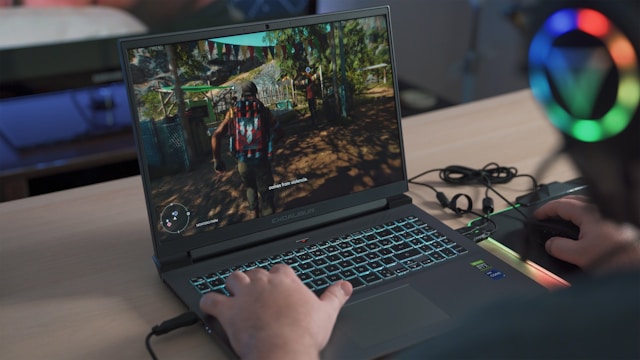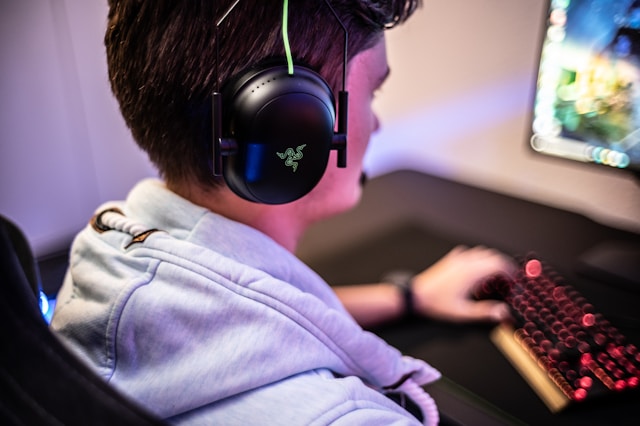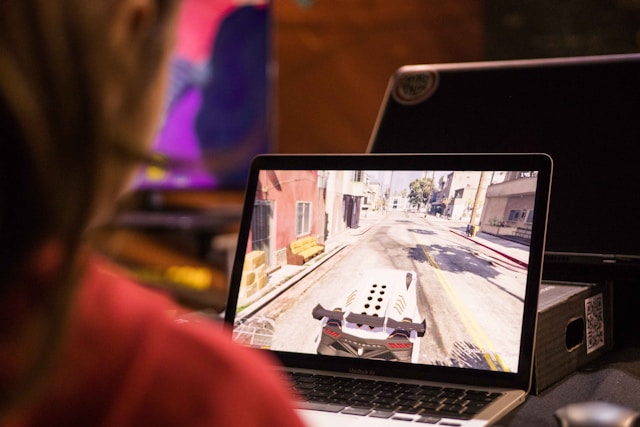Introduction
In game development, 3D game assets serve as the building blocks of virtual worlds, breathing life into digital landscapes and characters alike. These assets are the visual and interactive elements that players interact with, shaping their gaming experiences in profound ways. Without them, games would lack the immersive depth and realism that captivates audiences worldwide.
Moreover, this blog will delve into the realm of 3D game assets, exploring their importance, the concept of custom assets, and the growing role of AI in asset generation.
The concept of Custom 3D Game Assets
Custom 3D game assets take this concept a step further, offering developers the opportunity to infuse their games with unique, personalized content tailored to their vision. Whether it’s designing a fantastical creature, sculpting a sprawling cityscape, or crafting intricate objects, custom assets allow developers to stamp their creative mark on their projects, distinguishing them from the masses.
The growing role of AI Generated Game Assets
As technology continues to advance at a breakneck pace, the role of AI in generating game assets is becoming increasingly prominent. AI algorithms can now autonomously create stunning 3D models, textures, and animations, revolutionizing the way developers approach asset creation. This growing synergy between human creativity and artificial intelligence promises to reshape the landscape of game development in unprecedented ways.
Understanding 3D Game Assets
3D Game Assets and their Significance
At their core, 3D game assets encompass a wide array of digital content designed to populate virtual worlds and enhance player experiences. From lifelike characters to sprawling landscapes, these assets come in various forms, each serving a specific purpose in the game environment. Their significance lies in their ability to immerse players in rich, interactive worlds, fostering a sense of wonder and engagement.
Types of 3D assets used in 3D Games
The world of 3D game assets is vast and diverse, encompassing characters, environments, objects, and more.
- 3D Characters are the focal point of many games, serving as avatars for players to inhabit or adversaries to overcome.
- Environments, on the other hand, set the stage for gameplay, ranging from lush forests to futuristic cityscapes.
- 3D Objects, such as weapons, vehicles, and props, add depth and interactivity to the game world, enriching the player experience.
Importance of high-quality assets for enhancing gameplay experience
High-quality assets are essential for delivering a polished and immersive gameplay experience. From stunning visual fidelity to seamless animations, well-crafted assets captivate players and draw them into the game world. Conversely, low-quality or poorly optimized assets can detract from the overall experience, hindering immersion and undermining the developer’s vision. As such, investing in high-quality assets is crucial for maximizing the potential of any game project.
Introduction to AI-Generated Game Assets
Explanation of AI-generated game assets and their benefits.
AI-generated game assets are a groundbreaking innovation in the world of game development, offering unparalleled efficiency and creativity in asset creation. By using the power of artificial intelligence, developers can generate vast quantities of high-quality 3D assets in a fraction of the time it would take through traditional methods. This not only accelerates the development process but also allows for greater experimentation and iteration, leading to more innovative and diverse game experiences.
Examples of AI technologies used in generating 3D game assets.
Examples of AI technologies utilized in generating 3D game assets abound, showcasing the remarkable capabilities of machine learning algorithms.
- Neural networks, for instance, can be trained to generate realistic textures and materials, while generative adversarial networks (GANs) excel at creating lifelike characters and environments.
- Additionally, procedural generation techniques leverage AI to dynamically generate content such as landscapes, levels, and even entire worlds, further expanding the possibilities of game design.
Potential impact of AI on the future of game asset creation.
The potential impact of AI on the future of game asset creation is immense, promising to revolutionize the way developers approach content creation and iteration. As AI algorithms continue to advance and become more sophisticated, we can expect to see even greater levels of automation and creativity in asset generation. This not only reduces the barriers to entry for aspiring developers but also fosters a culture of innovation and experimentation, driving the industry forward into uncharted territory.

Getting Started with Custom 3D Assets
Essential Tools and Software
Blender: A versatile and open-source 3D modeling software renowned for its robust feature set and active community.
Maya: A powerful and industry-standard tool used for 3D modeling, animation, and rendering in film, television, and games.
3Ds Max: A comprehensive software package favored by professionals for its intuitive interface and extensive toolset for modeling, animation, and rendering.
3DAiLY: An innovative AI-powered tool that automates the process of generating 3D assets, offering speed and efficiency in asset creation.
Basic Principles of 3D Creation
Modeling: Learn the art of creating 3D models by manipulating vertices, edges, and faces to form shapes and structures.
Texturing: Understand the process of applying textures and materials to 3D models to add color, detail, and realism.
Animation: Master the techniques of animating 3D models, including keyframing, rigging, and character animation.
Tips for Beginners
Start Small: Begin with simple projects to build confidence and develop foundational skills before tackling more complex tasks.
Practice Consistently: Dedicate regular time to practice and refine your skills, whether it’s modeling, texturing, or animation.
Seek Guidance: Take advantage of online tutorials, courses, and community forums to learn from experienced professionals and fellow enthusiasts.
Experiment and Explore: Don’t be afraid to experiment with different techniques and approaches to find your unique style and workflow.
Embrace Feedback: Solicit feedback from peers and mentors to identify areas for improvement and refine your work.
AI Integration in 3D Game Development
AI’s role in 3D game development beyond asset creation
Beyond asset creation, AI plays a pivotal role in shaping the entire landscape of 3D game development. From procedural generation to dynamic environments, AI-driven features enhance every aspect of the gaming experience. For example, procedural generation algorithms can generate vast and diverse game worlds on the fly, offering players endless exploration opportunities and dynamic gameplay experiences.
Examples of AI-driven features
Examples of AI-driven features in 3D game development abound, showcasing the versatility and potential of artificial intelligence.
- Dynamic environments can adapt and evolve in response to player actions, creating immersive and responsive game worlds.
- Procedural generation techniques can generate infinite variations of levels, ensuring that no two playthroughs are ever the same.
- Additionally, adaptive gameplay systems can tailor the gaming experience to each player’s preferences and skill level, maximizing engagement and enjoyment.
AI player customization and their impact on Game Immersion
AI player customization offer a new level of immersion and personalization in games, allowing players to create avatars that truly reflect their identity and preferences. From customizable appearances to personalized abilities and playstyles, AI-powered customization options enhance player agency and immersion, fostering deeper connections between players and their virtual counterparts. This level of customization not only enhances the player experience but also opens up new opportunities for storytelling and gameplay innovation.
Best Practices for Creating 3D Assets for Games
Techniques for Optimization
Polygon Reduction:
Use techniques such as polygon reduction to decrease the complexity of 3D models without compromising visual quality, improving performance in-game.
LODs (Level of Detail):
Implement LODs to dynamically adjust the level of detail of 3D assets based on their distance from the camera, optimizing rendering performance.
Texture Compression:
Utilize texture compression formats to reduce file size and memory usage without sacrificing texture quality, ensuring optimal performance on various hardware configurations.
Adherence to Technical Specifications
Research Platform Requirements:
Get to know the rules and needs of different platforms like PCs, consoles, and mobiles. Additionally, this helps make sure your game works well on each one and runs smoothly.
Follow Industry Standards:
Adhere to industry-standard file formats, texture resolutions, and vertex counts to avoid compatibility issues and streamline the integration of assets into game engines.
Test Across Devices:
Test 3D assets on a range of devices and hardware configurations to identify potential compatibility issues early in the development process and make necessary adjustments.
Consistency and Style Maintenance
Establish Style Guidelines:
To keep everything in your game looking the same, decide on how it should look. Moreover, this includes the characters, backgrounds, and things they interact with.
Create Asset Libraries:
Create a collection of assets, textures, and materials that can be used again and again. This helps keep your game’s look consistent and makes creating new assets faster and easier.
Collaborate Effectively:
Team members, such as artists, designers, and developers, need to talk and collaborate to ensure everyone’s work fits together nicely. This helps make the game look good and ensures everything works well together. This helps keep the game’s style consistent and makes sure everything looks like it belongs together.

Future Trends and Considerations
The future of 3D game asset creation is poised for groundbreaking advancements, with AI integration set to play a pivotal role. As technology grows, new things like virtual reality, augmented reality, and real-time rendering are coming up. These things are changing how we make game stuff, giving us more ways to be creative and do new things. To keep up with changes, developers need to use AI tools like 3DAiLY for making assets faster. This helps them stay ahead of others in the field.
Conclusion
This guide has explored the essential aspects of creating custom 3D game assets. From understanding their importance to mastering the tools and techniques of asset creation. By using AI-generated game assets and embracing emerging technologies, developers can unlock creativity. Moreover, they can then deliver immersive gaming experiences like never before. To embark on your journey of 3D asset creation, try out 3DAiLY, the AI-powered tool that revolutionizes asset creation with speed and efficiency. So, what are you waiting for? Start creating your next 3D Game asset today.



